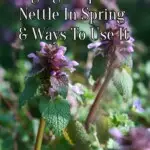
Every winter, there comes a point where you bundle up tightly, head outdoors, and it hits you, right in the face – that little whiff of spring.
Instead of bitter cold, the wind feels a tad warmer.
The sky is lighter.
And is that birdsong you hear?
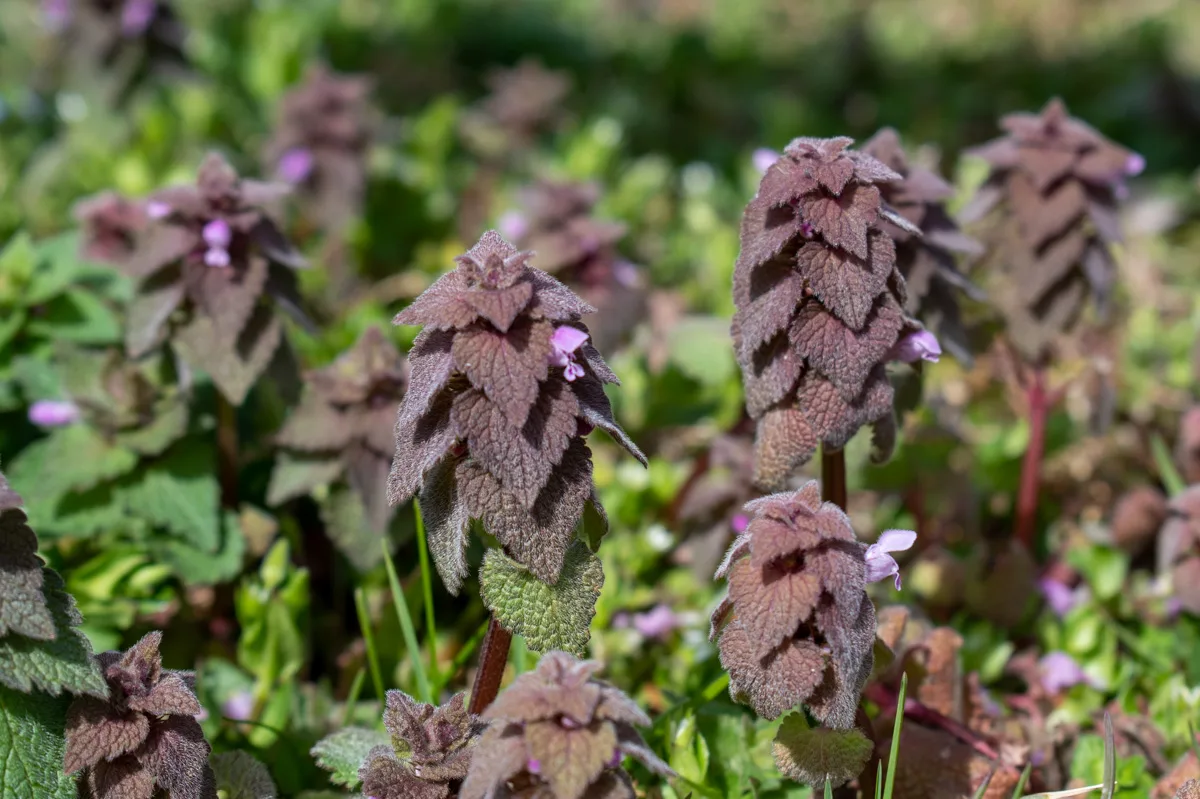
It’s at this time when you feel that maybe, just maybe, winter won’t last forever. And before you know it, spring is here, bringing with it a whole cornucopia of wild food to eat.
Spring is one of my favorite times of year to forage. After all of the white and gray and cold, we’re suddenly surrounded by growing things. The green of it all almost hurts your eyes.
It’s time to get out and pick purple dead nettle.
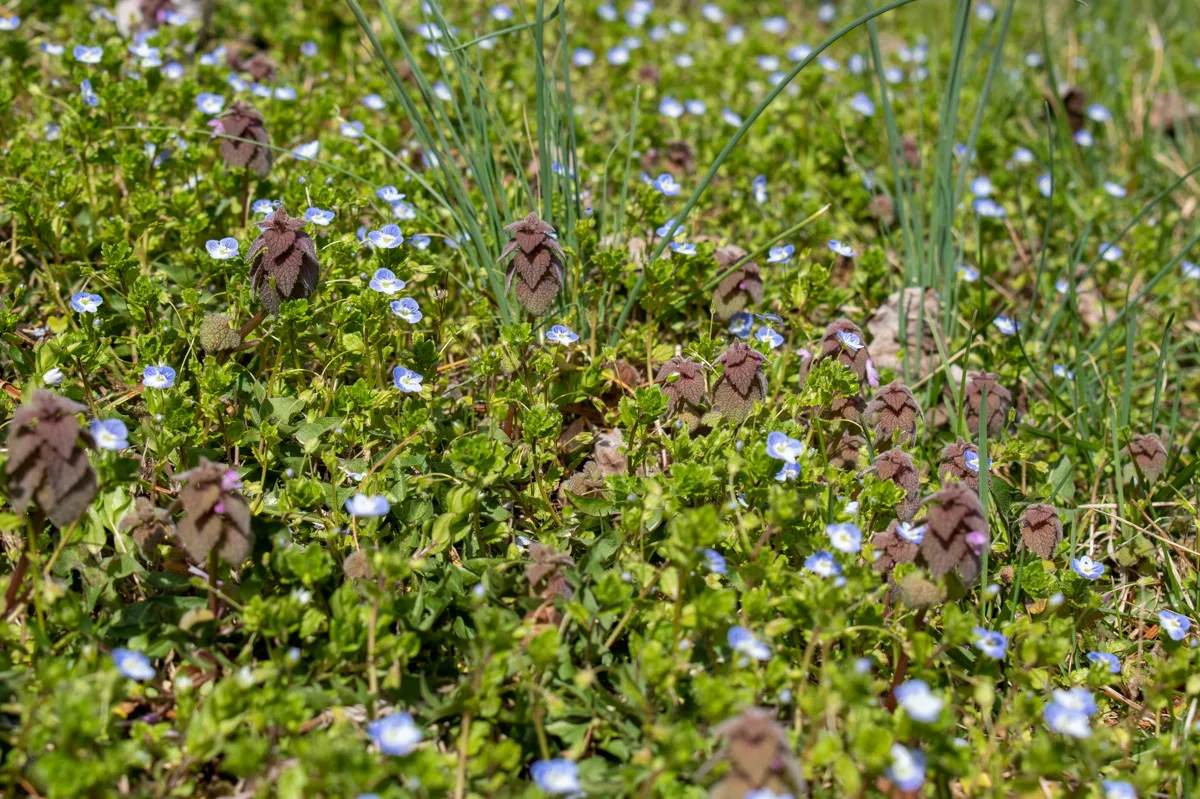
For most folks, this humble-looking plant is nothing more than a plant growing in their yard. But it’s so much more than a pretty weed. Lamium purpureum is a handy plant to have around for eating and folk remedies.
Purple dead nettle isn’t native to the States; its natural habitat is Eurasia. It’s naturalized over the decades. You can find it in nearly every part of the united states. And I’ll bet after you finish reading this article you’ll start seeing it everywhere.
It goes by many names – dead nettle, red dead nettle and purple archangel.
Purple dead nettle is a bit of a mixed-up plant. It earned its name, dead nettle, because the leaves are similar to stinging nettle. However, because there are no stinging trichomes on the leaves, it’s considered ‘dead’. To top it all off, it’s not even a true nettle (Urticaceae family) – it’s a mint.
Be Responsible
Before we go any further, please be responsible and always ask your physician before trying any new herbal remedies, especially if you’re pregnant, nursing or immunocompromised.
And don’t be that guy that gives foragers a bad name. Ask permission before picking on someone’s property. Only take what you need and be mindful of the wild creatures who rely on it for food. There’s enough for everyone.
If you’re new to eating the weeds, this is a great plant to start with. Here are 12 reasons you should pick purple dead nettle.
1. Purple Dead Nettle is Easy to Identify
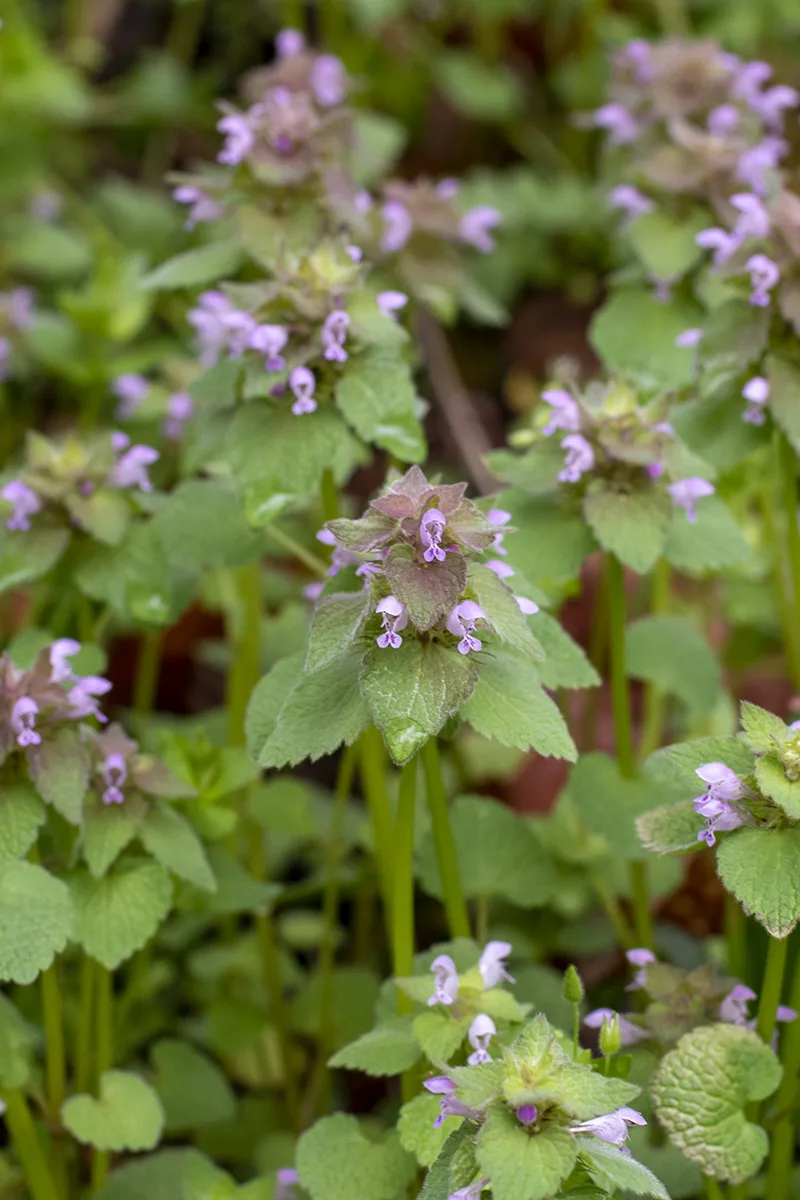
Many people are intimidated by eating wild food because they’re nervous about ID’ing plants incorrectly.
Which is good, as that’s always a serious consideration.
However, purple dead nettle is one of the easiest plants to identify.
In fact, you probably already know it by sight, even if you don’t know the name.
You probably saw the picture at the top and said, “Oh yeah, I know what that is.”
Purple dead nettle is a member of the mint family. It has heart-shaped or spade-shaped leaves with a square stem. Towards the top of the plant, the leaves take on a purple-ish hue, hence its name. As the plant matures, tiny, elongated purple-pink flowers will develop.
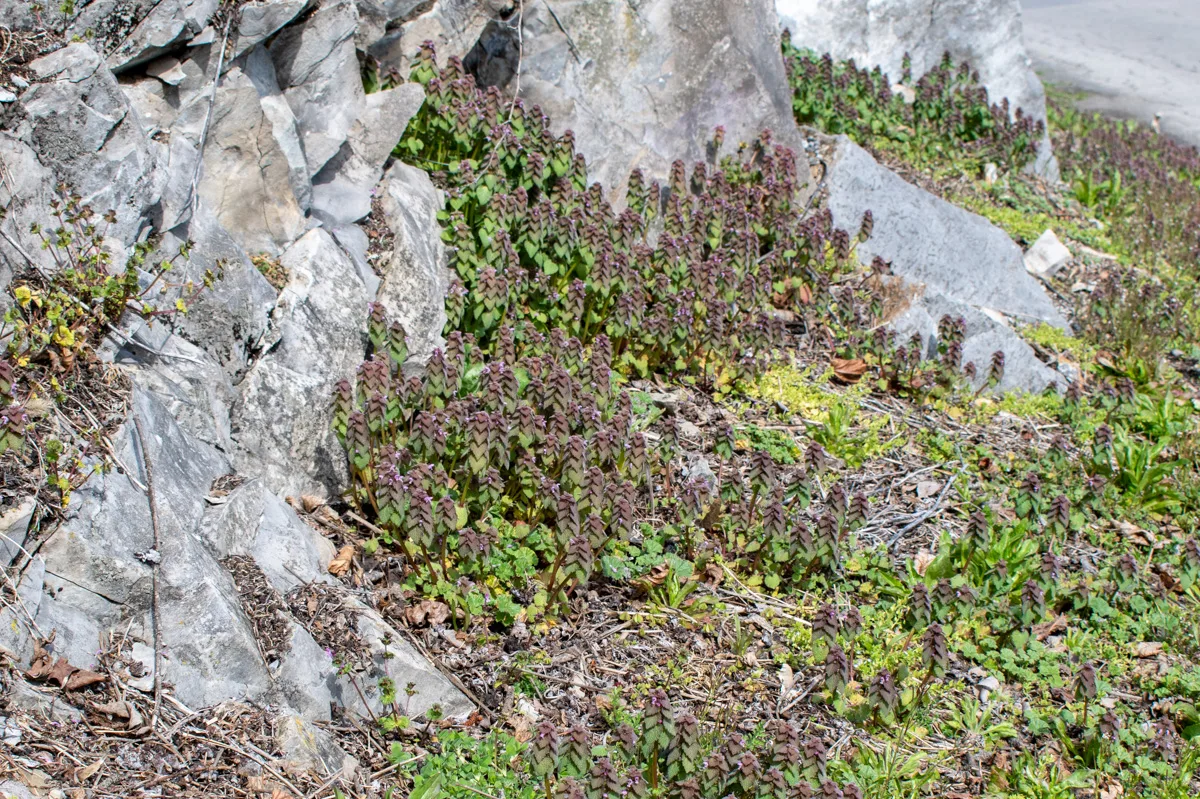
2. Purple Dead Nettle Has No Dangerous Look-Alikes
Purple dead nettle doesn’t have any poisonous look-alikes. While it’s often confused with henbit, that’s okay, because henbit is also an edible weed. Because of this, purple dead nettle is the perfect plant to start you on your foraging journey.
And just in case you’re curious…
How to Tell Purple Dead Nettle from Henbit
Purple dead nettle and henbit are both of the mint family, and they have that easy-to-identify square stem. To tell them apart, look at the leaves.
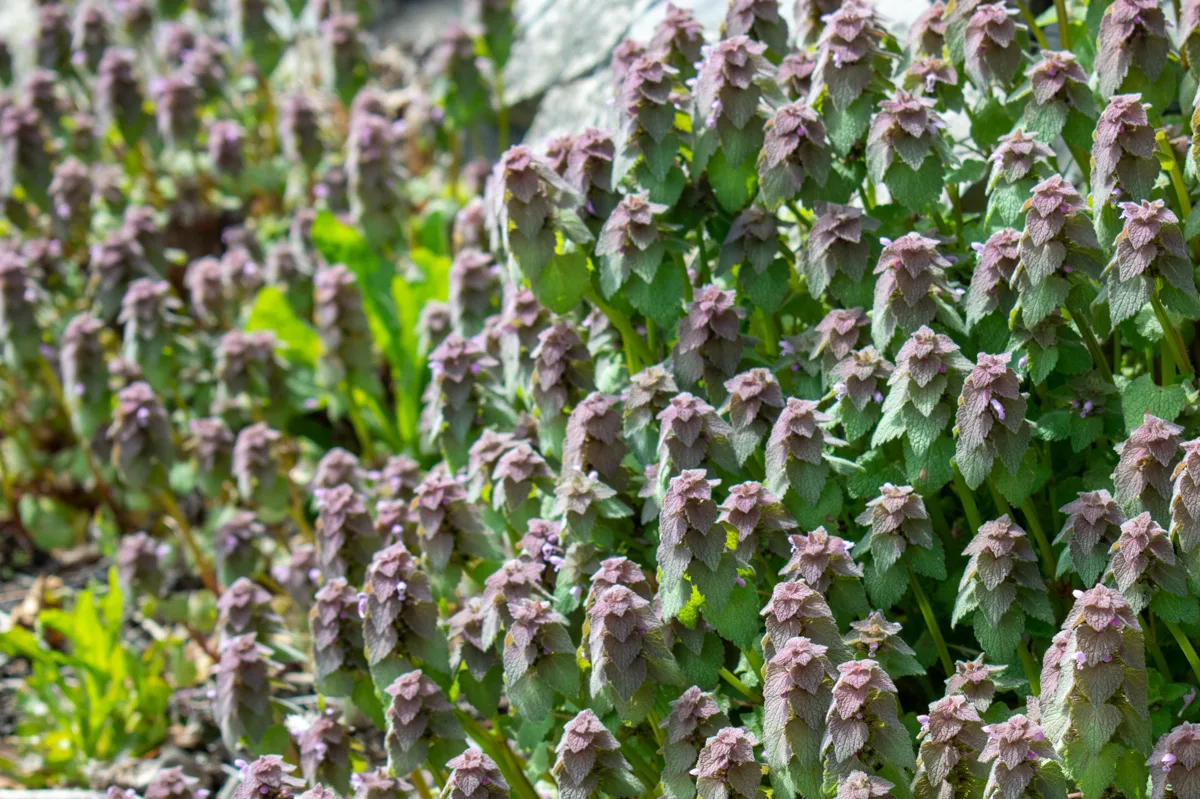
Purple dead nettle has leaves that grow from the top of the stem down, in an almost cone shape. The leaves grow in matching pairs, one on each side of the plant, so you end up with leaves growing in columns down all four sides of the square stem.
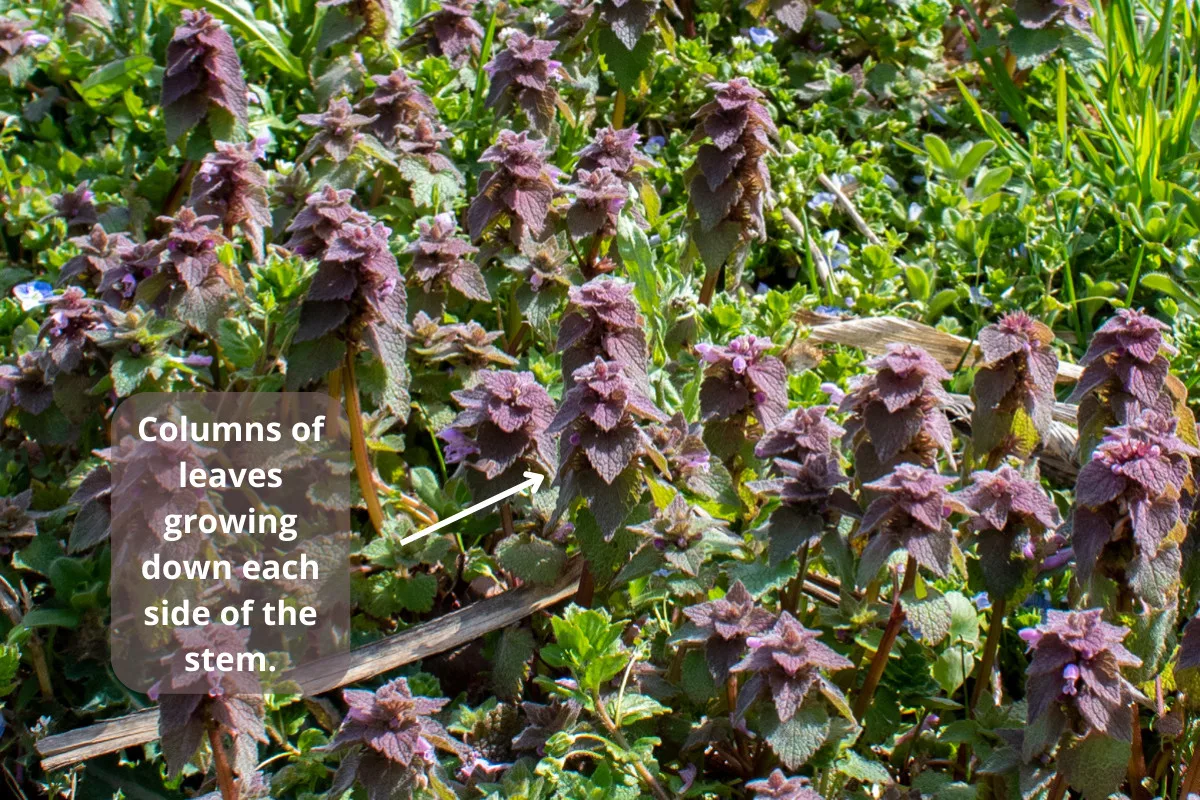
The leaves often have a purple blush to them. And the edges of the heart-shaped leaves are saw-toothed.
Henbit has leaves that grow in a cluster around the stem, then a length of bare stem, then another cluster, and so on. The leaves of henbit have scalloped edges and a circular appearance.
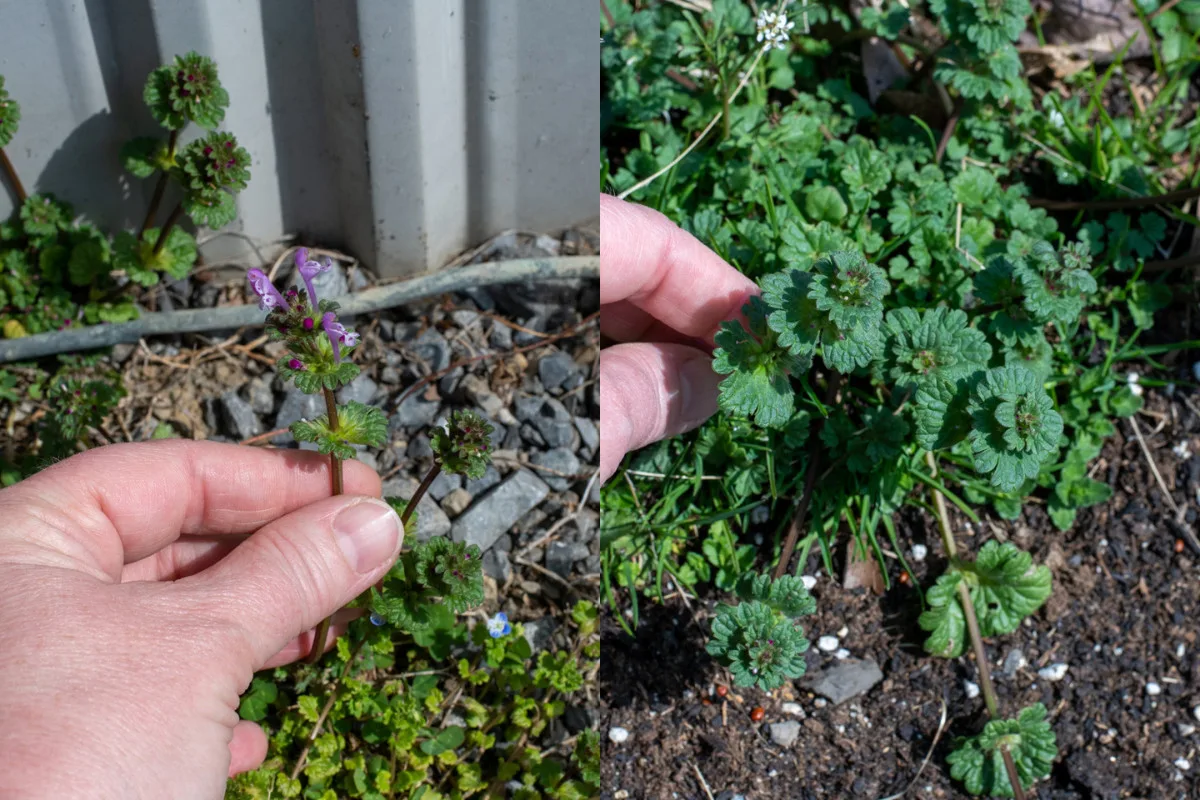
3. You Can Find Purple Dead Nettle Everywhere
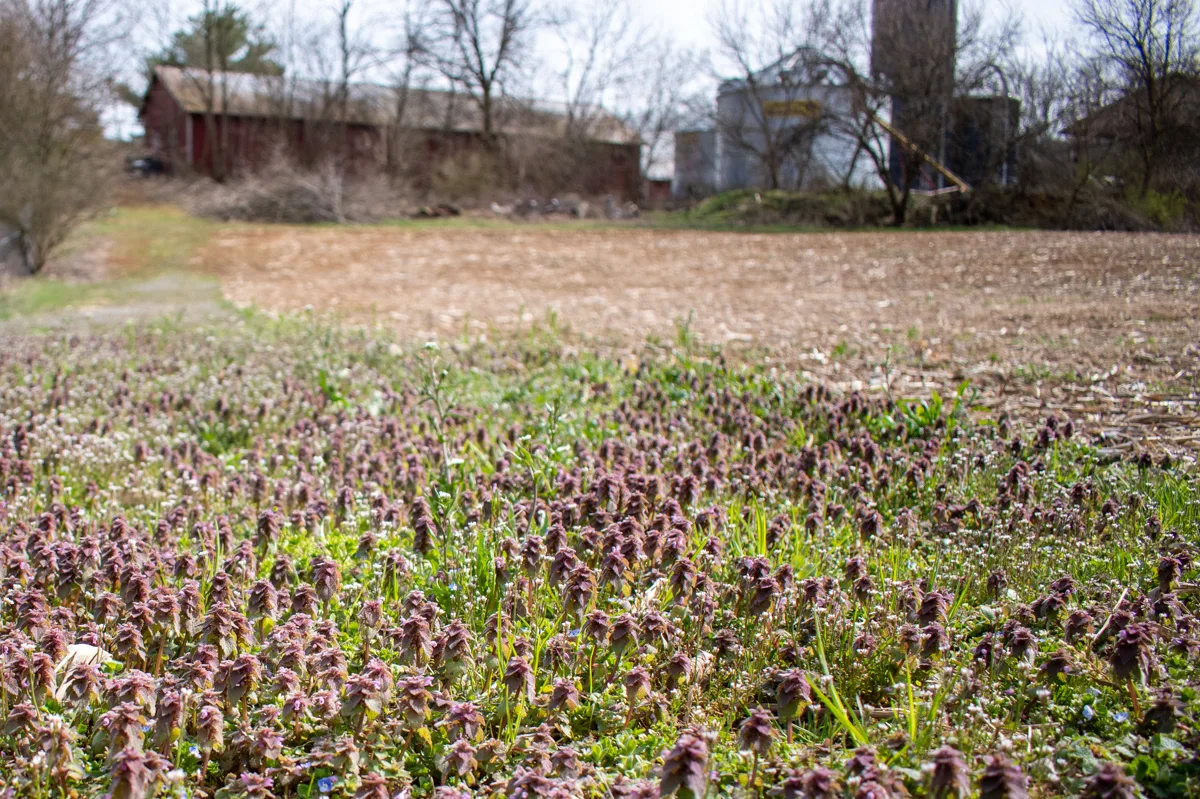
I can guarantee you’ve seen it before, even if you didn’t know what it was. And once you’re familiar with it, you will see it everywhere you go.
It’s growing in the ditch alongside the road. It’s the giant swathes of dusky purple you see in cornfields, where it grows before the corn is planted. It grows at the edges of your lawn. It grows in patches on the edge of the woods. It’s probably growing in your garden, much to your chagrin.
It loves disturbed land, so check in fields or where the brush was cleared in the previous season.
This wild edible grows nearly everywhere as it’s not picky when it comes to sunlight – it grows in full sun and even shade. And purple dead nettle loves moist soil.
4. Purple Dead Nettle is More Important for Bees than Dandelions
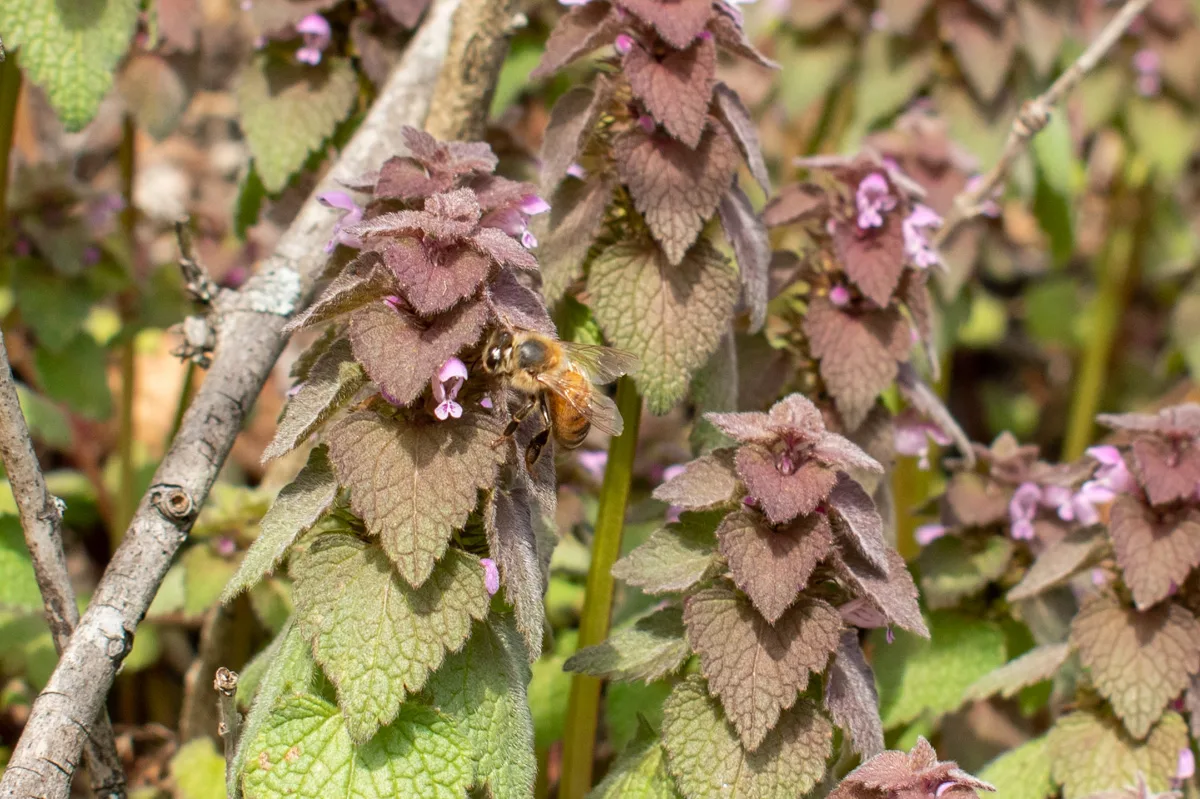
Long before I find my first morel of the season, I’m sipping fresh purple dead nettle tea. This is one of the first wild edibles to make an appearance each spring. And if you live in a climate with mild winters, you may even see it in the winter too.
Because it’s one of the first plants on the scene, it’s an important food for native pollinators and honeybees.
There’s often a lot of noise on social media every spring asking people not to over-pick the dandelions and save them for the bees. We’ve already discussed why you don’t have to save the dandelions for the bees.
You’ll often see it buzzing with bees. Thankfully, there is plenty of it to go around. Purple dead nettle has a way of popping up everywhere, especially in commercial crop fields before they are planted. One of the best things you can do for pollinators in the spring is to hold off on mowing your lawn for a while.
Letting this beautiful plant grow as pollinators emerge after a long winter is an easy way to help with the pollinator crisis.
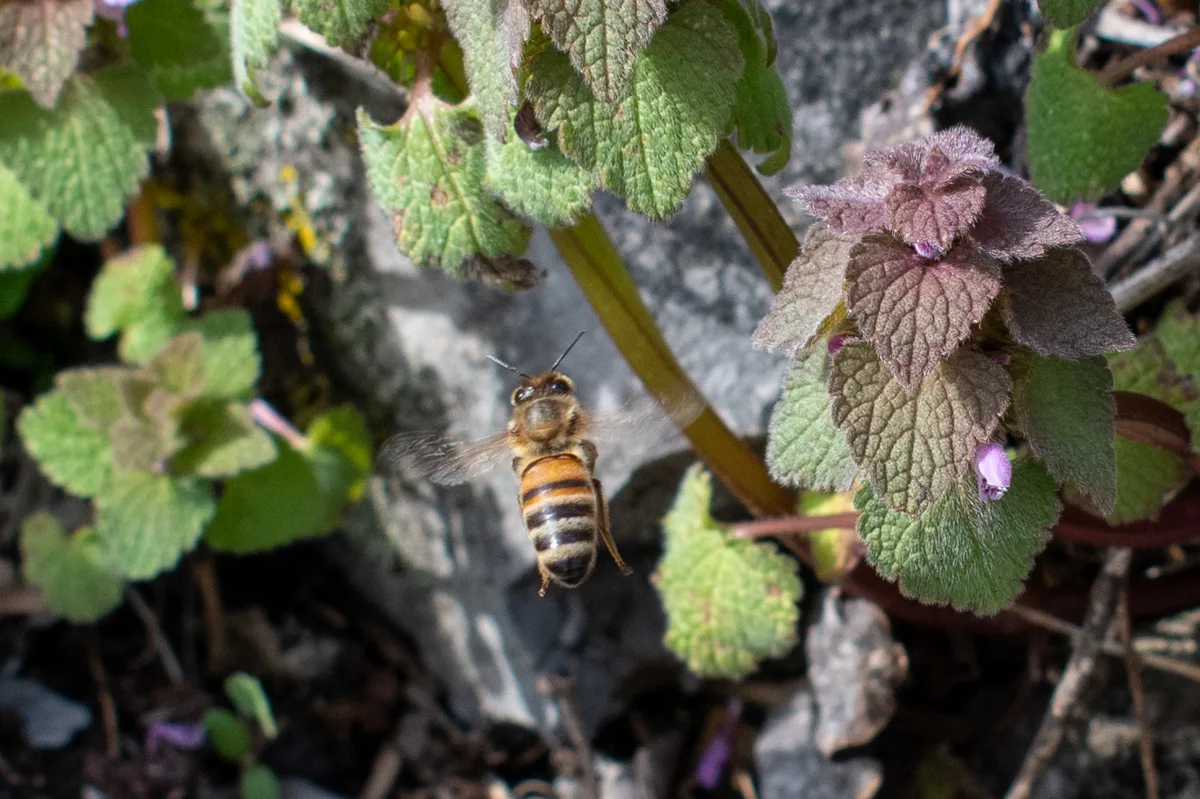
5. You Can Eat Purple Dead Nettle
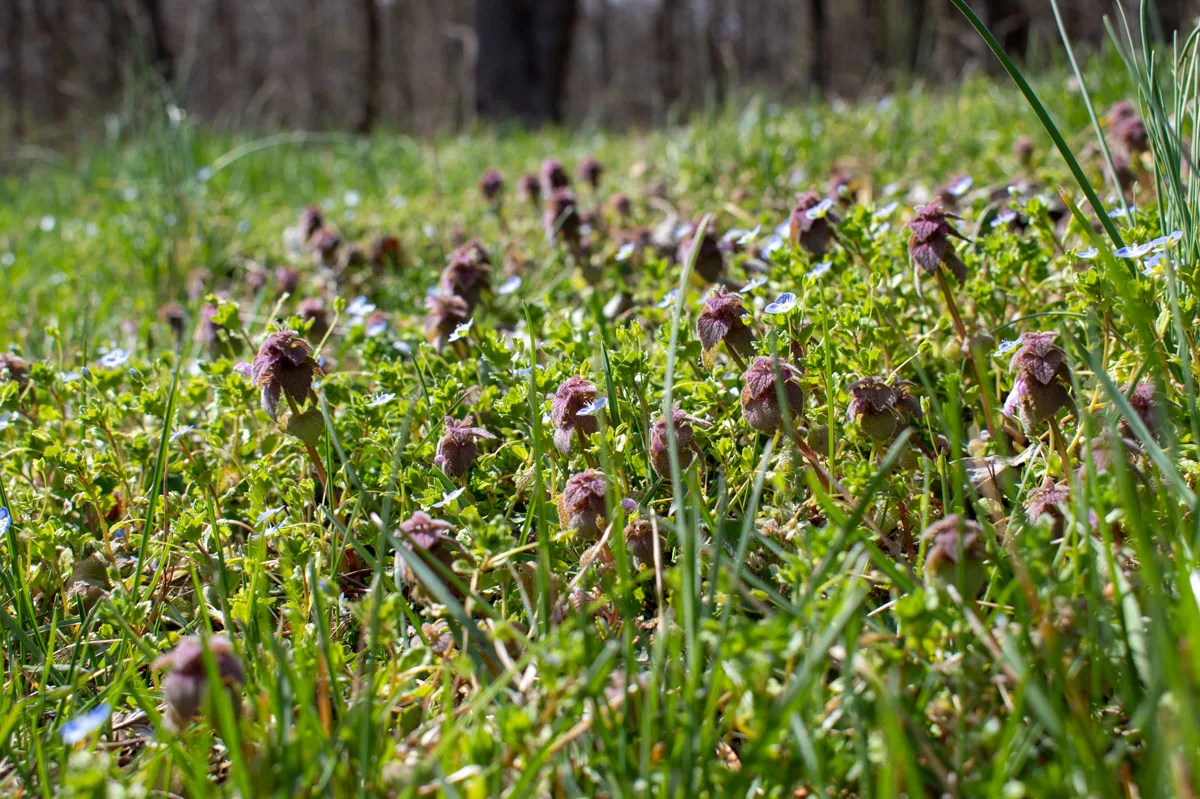
Purple dead nettle is edible, which always makes me laugh a bit. Everyone always assumes edible = tastes good. I’ll be honest; I don’t find myself chowing down on dead nettle salads or pestos each spring.
On its own, it’s a bit strong tasting, very herbal and grassy. And the leaves are fuzzy, which doesn’t give it the most appealing mouthfeel.
That being said, it’s still a nutritious wild green, and it’s worth incorporating into your diet. Wild foods are always more nutrient dense than cultivated food. Adding even a few foraged plants to your diet is a great step towards better health.
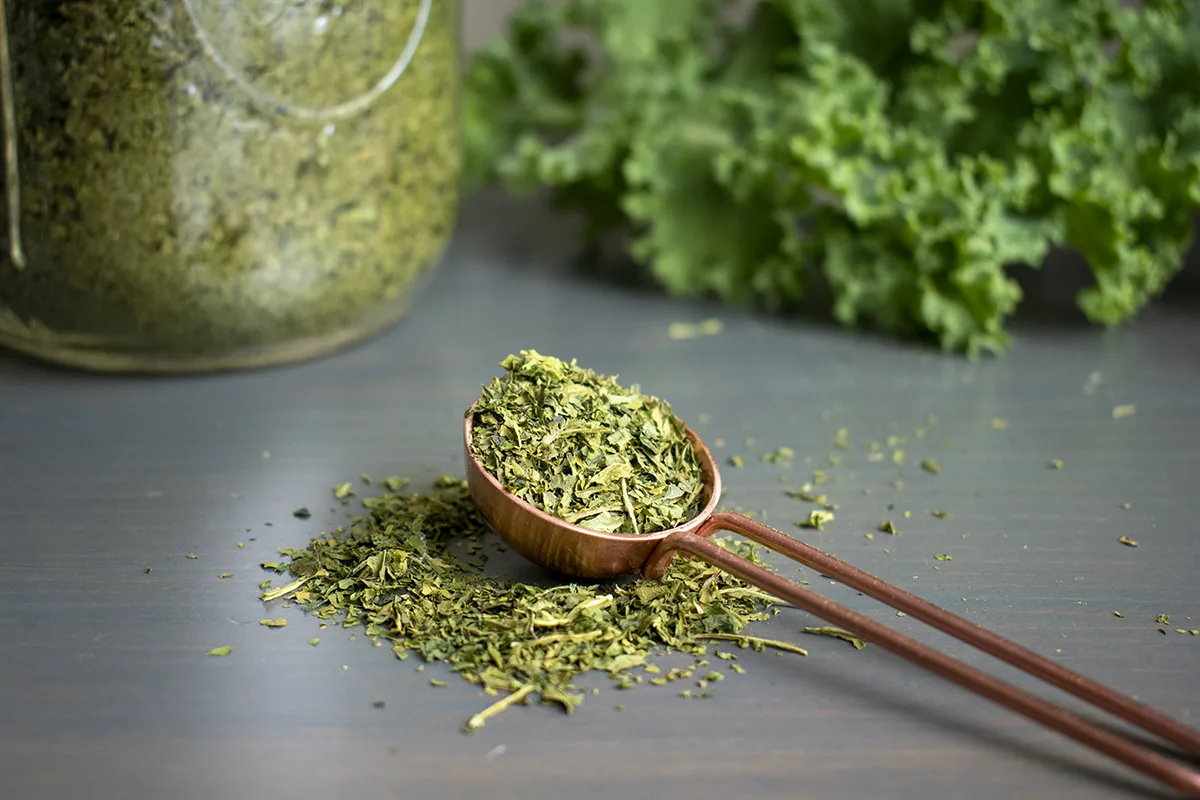
It’s the perfect herb to dehydrate and add to your own custom powdered smoothie greens. Sometimes it goes in my scrambled eggs. And I add a handful of the leaves to my salad, along with plenty of other fresh greens. You could even chop it up and add it to tacos instead of cilantro.
Use this edible weed in the same way you would any other bitter green or herb.
6. Your Chickens Can Eat It Too
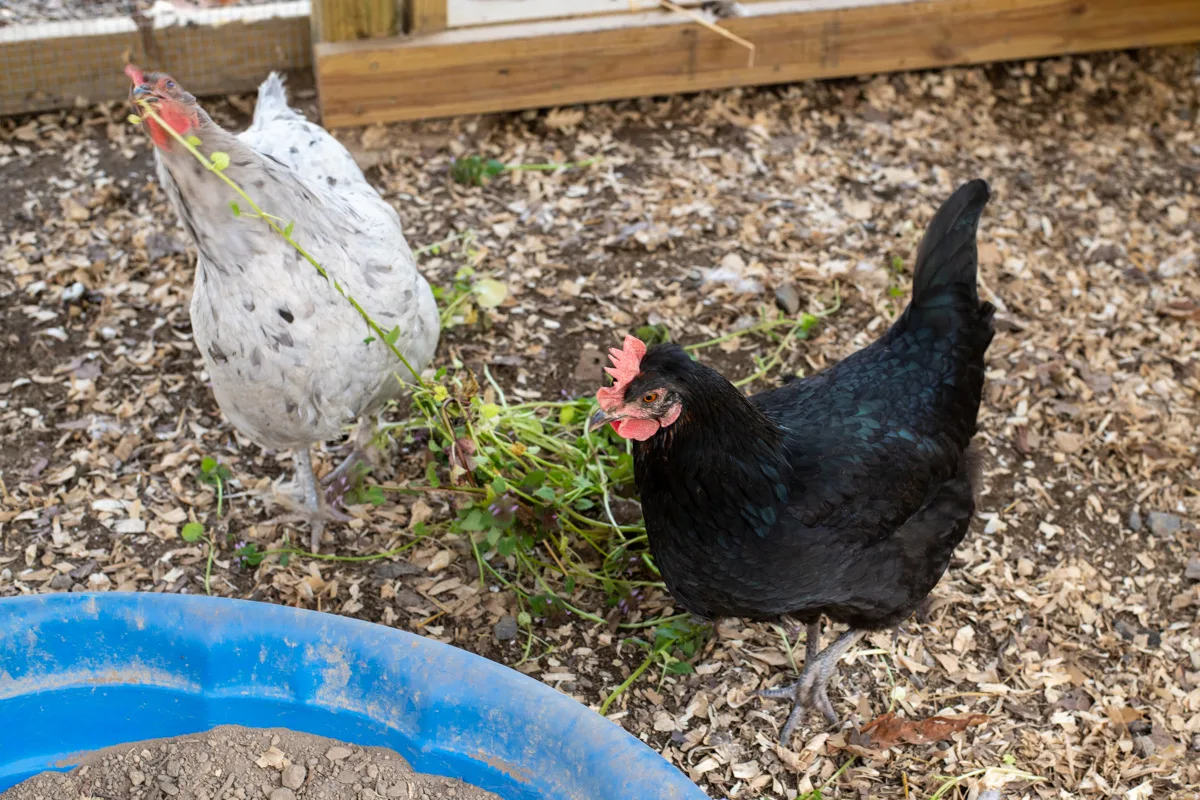
You aren’t the only one who will enjoy fresh purple dead nettle. Chickens love this green as well, and after a long, cold winter, your flock deserves a healthy, tasty treat. Don’t forget to pick a little to share with your peeps. They’ll eat it right up.
7. Purple Dead Nettle is Great for Seasonal Allergies
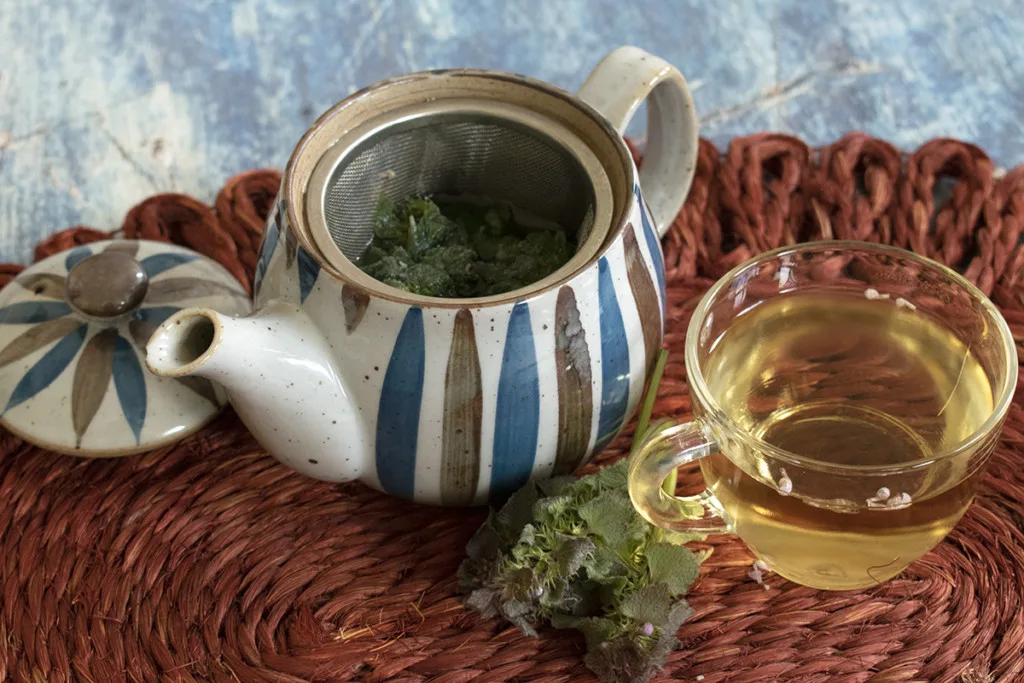
I never used to have allergies. Bring on the pollen; I can handle it.
And then, I moved to Pennsylvania. Every spring was like a personal assault on my mucus membranes. By May, I was ready to claw my eyeballs out.
Too much? Sorry.
Then I found out about purple dead nettle. Every spring, as soon as it starts growing, I start each day with a cup of tea made with it and a large tablespoon of local honey. Purple dead nettle is a natural antihistamine. It’s certainly helped make the season of ‘All the Pollens’ bearable.
If you live in an area with lots of purple dead nettle, consider drinking a daily cup of tea when pollen counts are high. You can bet purple dead nettle is contributing to your itchy eyes and runny nose.
I even make it into a natural soda using my homemade ginger bug. And sometimes, a splash of gin goes into the soda too. Those herbal flavors work well together.
8. Purple Dead Nettle is Great for Bug Bites and Scratches
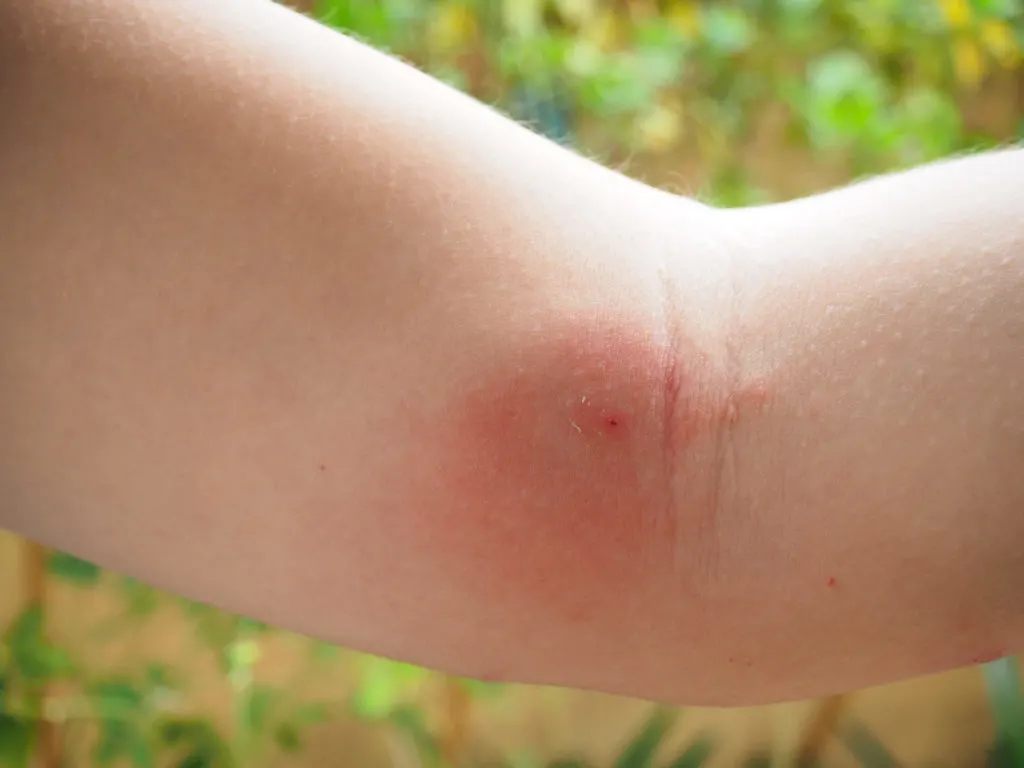
When you’re outdoors and find yourself on the wrong end of an angry insect, relief is as close as a purple dead nettle patch.
Chew the leaves up and then put them on the bug bite or sting. (Yeah, it’s kinda gross, but that’s life.) Purple dead nettle has anti-inflammatory properties, which will help to bring relief to the bite.
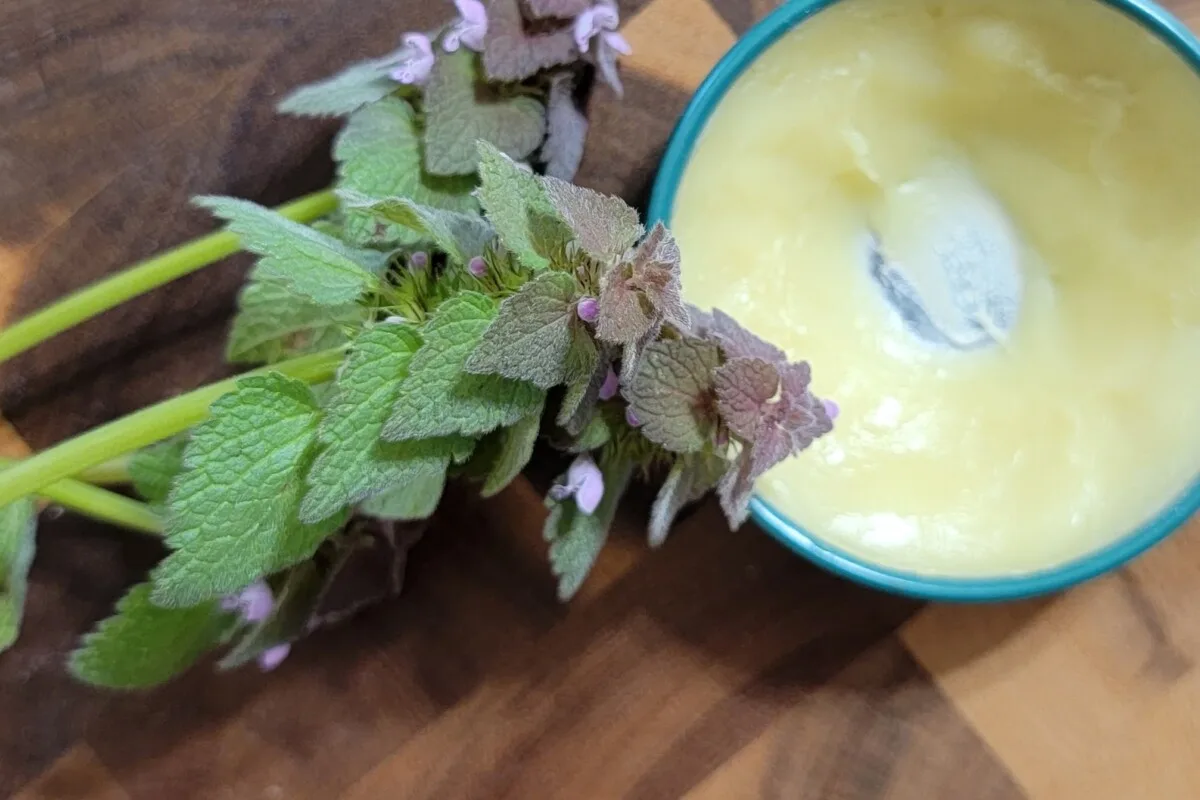
Or if putting leaves covered in spit on your bug bite isn’t your cup of tea, you can always start out prepared. Mix up a batch of the Nerdy Farm Wife’s purple dead nettle salve and tuck it into your day pack for hikes and adventures outdoors.
Purple dead nettle is anti-inflammatory and astringent, making it a good basic healing salve.
For more information on its many healing properties, you can check out the Herbal Academie’s Purple Dead Nettle page.
This prolific weed yields the loveliest pale green dyed yarn. It’s a soft, fresh green, perfect for spring. If you’ve got a lawn brushed with the purple of dead nettle this spring, consider picking a bucketful to dye wool (or other protein-based fibers).
9. Create a Purple Dead Nettle Tincture
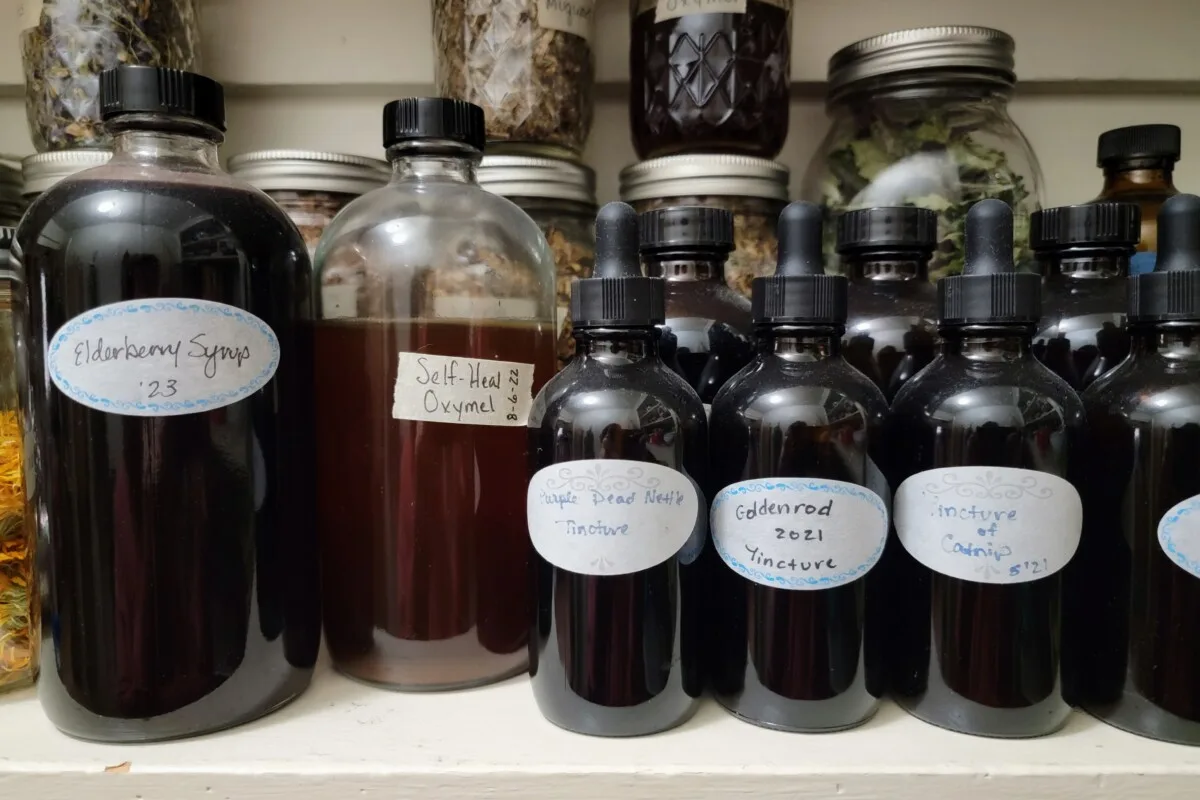
For my herbal remedies, I prefer tinctures. They’re easy to make and more potent. And if you don’t enjoy the taste of purple dead nettle tea, a tincture is a great way to enjoy the medicinal benefits without having to gulp down a tea you hate.
In a clean mason jar, combine ½ cup of 100-proof vodka and ¼ cup of finely minced purple dead nettle. Place a small piece of parchment paper over the top of the jar before firmly screwing on the lid. (The parchment will protect the metal lid from the alcohol.)
Give the jar a good shake and then store it in a cool, dark place, such as a cupboard, for a month. Strain the tincture into a clean amber bottle or jar and store, again, somewhere cool and dark.
Take a dropper of the tincture as needed, or you can stir a dropper into your favorite beverage.
10. Purple Dead Nettle Infused Oil
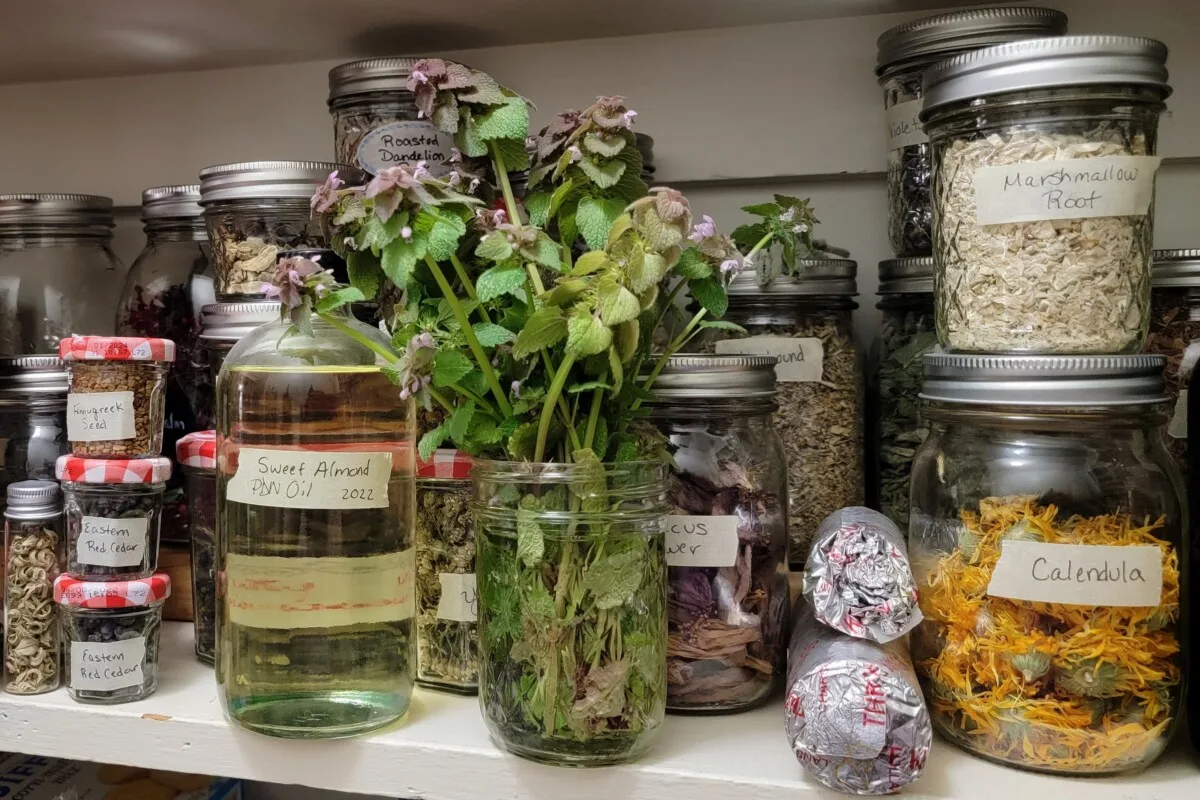
Similarly, you can infuse a carrier oil with it and use it topically. Use the infused oil to make balms, lotions and creams. Combine it with a little plantain tincture, and you’ve got yourself the beginnings of the perfect after-bite salve for bug bites.
Fill a sterilized pint jar halfway with minced purple dead nettle. Top up the jar with a neutral carrier oil, such as apricot kernel, grapeseed oil or sweet almond oil. Fill the jar almost completely.
Place the lid on the jar and give it a good shake. Store the oil somewhere dark, and give it a good shake now and again. I like to keep my infusions in my pantry, as it’s easy to remember to shake them. The infused oil will be ready in about 6-8 weeks. Strain the oil into another sterilized jar, cover and label the jar and store it someplace dark and cool.
It’s important to note that purple dead nettle-infused oil should only be used externally.
Botulism is a concern when infusing oils with herbs to ingest. It’s best to play it safe and only use it on your skin.
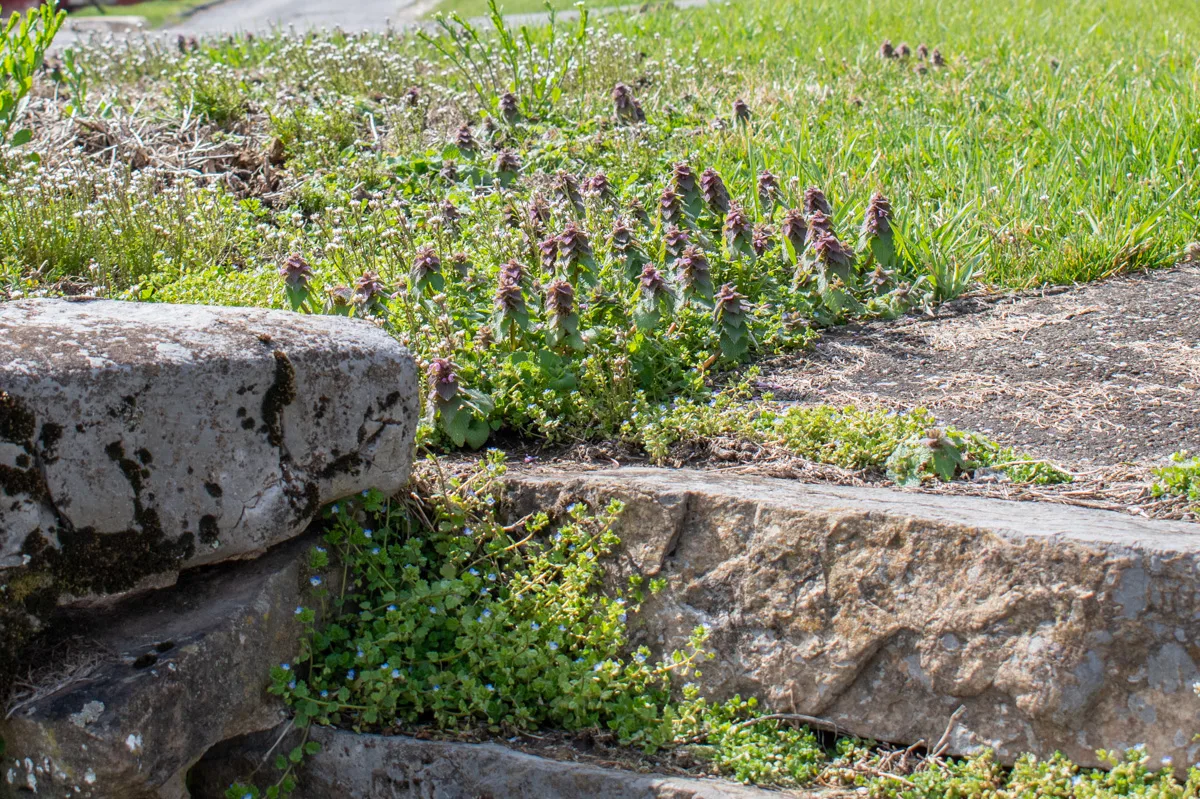
Now that you know what you’re looking for, get out there and pick some purple dead nettle. But I should probably warn you, once you start picking it, you’ll be well on your way to foraging other plants. Before you know it, you’ll see edible plants wherever you look, and you can annoy your children by saying, “I can see five different edible plants around us; can you name them?”

Get the famous Rural Sprout newsletter delivered to your inbox.
Including Sunday musings from our editor, Tracey, as well as “What’s Up Wednesday” our roundup of what’s in season and new article updates and alerts.


